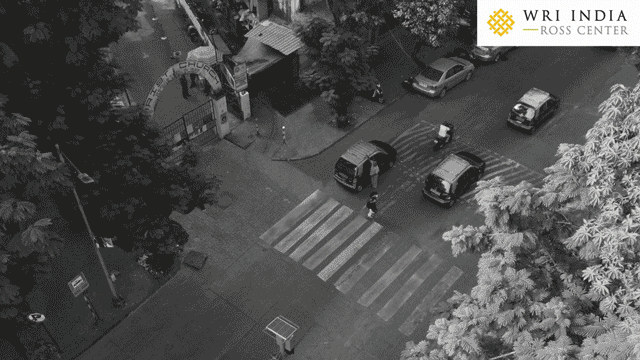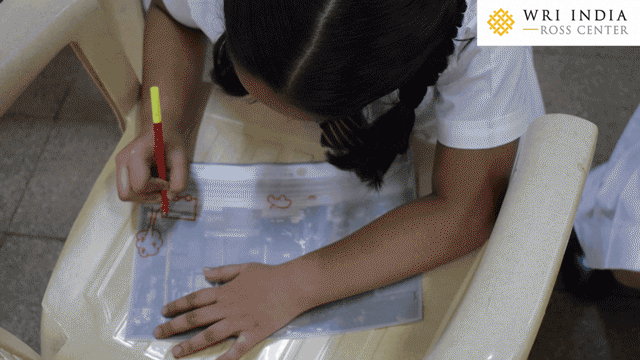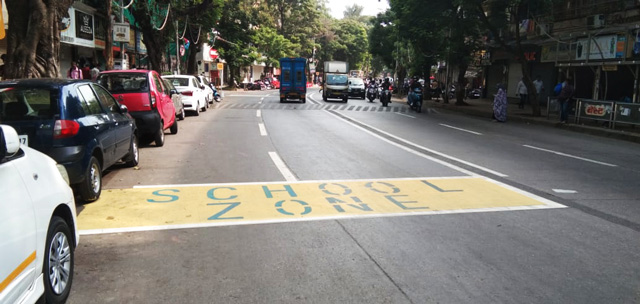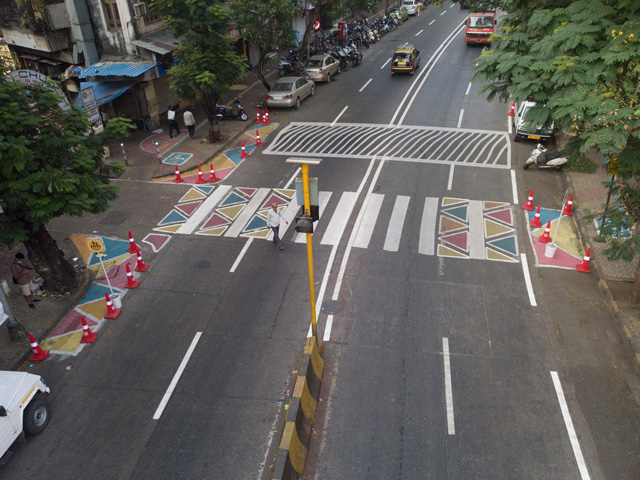6 Ways To Design Safer School Zones: Lessons From Mumbai
by e -
This article originally appeared on cities4children.org on April 5, 2022.
As education is the right of every child, so is safe access to schools. As schools in India reopen after nearly two years of online education, it is important to reexamine how children access schools. Data suggests that every year, more than 30 children die due to road traffic crashes on Indian streets, and post-pandemic commutes may be even more motorized than in the past.
Identifying road traffic crash hotspots around schools can not only prevent injuries and deaths but encourage more sustainable mobility options and improve the experience of all pedestrians. Children are a kind of indicator species; if we design our cities to be safer for children, they become safer for everyone. Accelerating behavior change from personal vehicles dependency to walking, cycling and using streets as public spaces is an important step to make cities thrive for everyone.

In October 2021, WRI India, under the Bloomberg Initiative for Global Road Safety and in partnership with the Municipal Corporation of Greater Mumbai, Mumbai Traffic Police, and the Christ Church School, implemented a safer school zone in the Byculla neighborhood in Mumbai. The design of this school zone was developed with students to support their needs, likes and aspirations for an improved experience as they go back to school. Their participation in the transformation was critical to empowering them to bring about the changes they want to see.

Below, we illustrate the six school zone design elements used, their implementation using tactical urbanism, and their impact on children and other street users’ experiences during the trial period.
1. Delineation of School Zones
School zones in our context mainly refer to the area from outside a school’s entrance to the nearest public transport stop. The zones ensure that students feel safe and confident walking to school. Those coming from further away can be dropped off by parents at the edge of the zone and walk the final stretch to school. For this pilot project in Mumbai, the school zone was defined as an approximately 200-meter stretch that provides foot and car access to the students of the Christ Church School and St. Agnes School.

2. Road Markings and Signage
Road markings ensure a smooth and orderly flow of traffic. In this project, the start of the zone was depicted with signs on the road that said “School Zone” and “School Zone Ahead.” Other signs indicated pedestrian crossings, including “Slow Down” and “Stop” at appropriate locations such as intersections and crossings.
3. Vibrant Pedestrian Crossings
Vibrant pedestrian crossings are combined with the traditional zebra markings by using colorful patterns that increase awareness by street users. In this trial, the pedestrian crossing was drawn using paint directly outside the Christ Church School’s entrance. The vibrant colors help children identify areas to cross safely as well as alert motorists that they must stop and give way to pedestrians, especially school children.
4. Bulb-Outs
Bulb-outs are extensions to footpaths that help reduce the crossing distance of a street and limit waiting pedestrians’ exposure to moving vehicles. At this stretch, bulb-outs were provided at locations where children usually wait. These bulb-outs also help in reducing speeds on average by 2-8 kilometers per hour by narrowing the width of vehicle lanes.
5. Speed-Calming Measures
Speed-calming measures are essential at all locations where pedestrians are likely to encounter moving vehicles, especially at intersections that lack signals and crossings. As the speed of a vehicle increases, the driver’s field of vision narrows, making it harder for them to see small children or react to sudden events, like a child running into the street. Children generally have a limited understanding of speed, and their cognitive skills are also still developing. Speed-calming measures near Christ Church School and at the entrance of St. Agnes School helped reduce vehicle speeds by 17%.

6. Informative Footpaths
It is important to also consider how streets look from a child’s perspective to understand their pathways. In this school zone, the design included colorful pavement markings, guide strips on footpaths and simple road markings to enhance children’s experience on foot. The markings directed children to the school entrance and public spaces in the school zone. The guide strips delineated a clear walking zone on the footpath and directed children to safety with a colorful sign that read “Wait.”
Assessment of the Transformation and the Way Forward
120 people were surveyed before and during the trial. These included 40 children, 40 pedestrians, 20 local business operators and 20 motorists. The survey revealed that 41% of motorists stopped at the vibrant pedestrian crossing compared to 10% who stopped at a different, nearby crossing. 98% of users felt the street was safer during the trial than before, and 93% of children felt the street was more accessible.
The success of the Christ Church school zone trial helped to demonstrate to the authorities how small changes in street design around schools can significantly improve safety for children. It also helped the Municipal Corporation of Greater Mumbai make a case for the permanent transformation of this street into a child-friendly school zone. This project has also led to the state of Maharashtra starting discourse around scaling up and introducing safer school zones in other cities across the state.
We hope these and other school safety projects can encourage more children to walk or cycle, which will help them adopt healthier, more active lifestyles, while also reducing carbon emissions.
Views are personal.
Lekshmy Hirandas was formerly a Program Associate with the Sustainable Cities and Transport program at WRI India.


